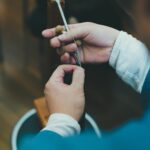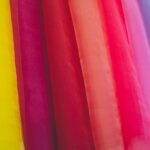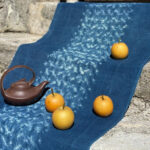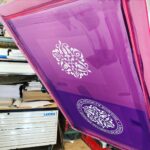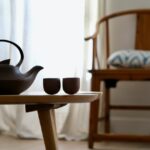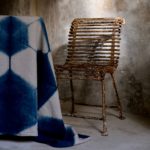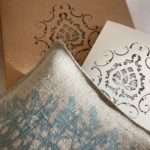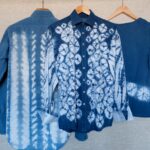
It all started as a whim, a wish to cover up a stain on an old favourite linen skirt… and it ended up being a great idea! Soon, one of my clients was asking me to upcycle her lovely white linen dress. Upcycling beloved items of clothing to cover up stains, or defects, or just to glamour them up, gives a new life to quality items of clothing made of natural fibres. I have a small stock of organic cotton t-shirts and linen scarves to create some of the shown products, but you are welcome to send me your item to upcycle. A selection previous orders, all pictures are linked to the relevant item
